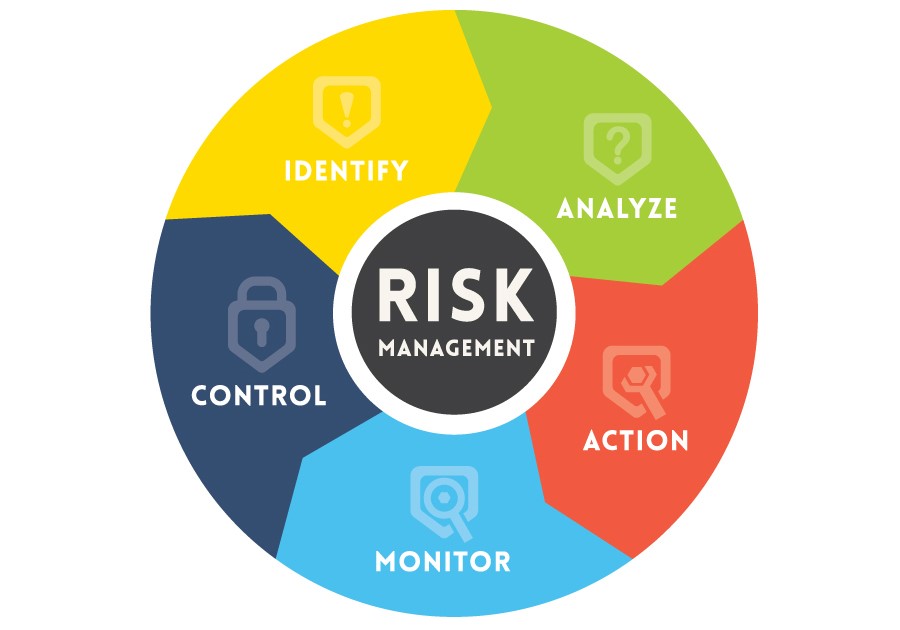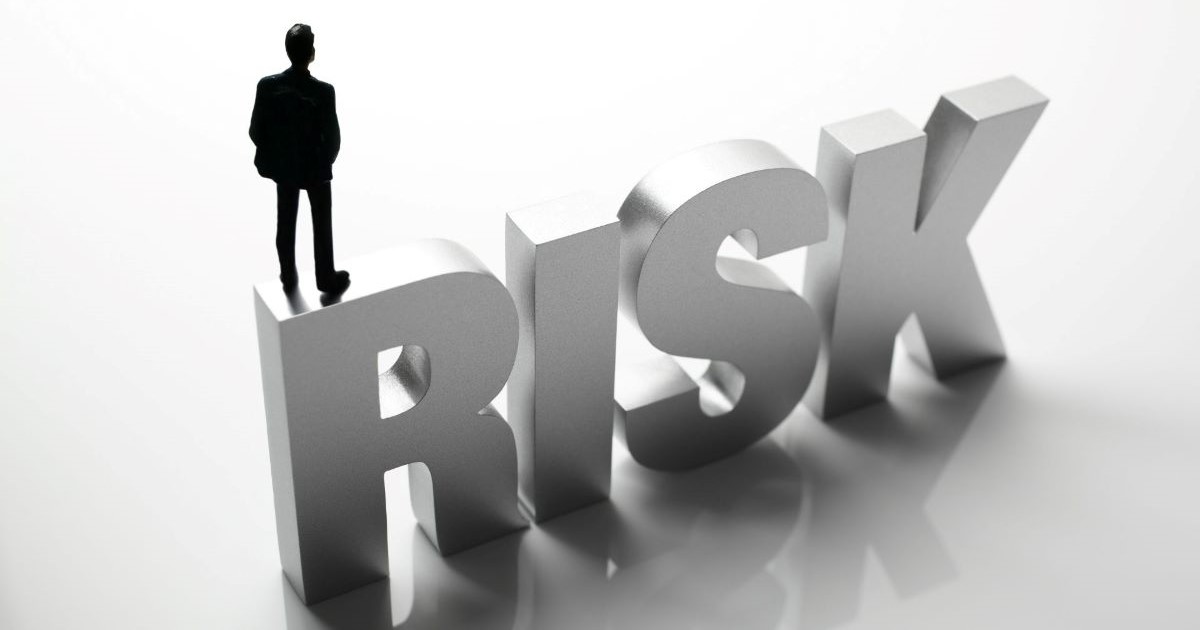What is the Risk Management Process?
The Risk Management Process is a framework for the actions that need to be taken and addressed. It is simply – an ongoing process of identifying, treating, and then managing risks – and it should be ‘best practice’ for any organisation.
Every organisation must contend with risks. Whether it is the environment in which the business operates, scaling the business, launching new products, employing people, collecting data, managing processes, building new systems—these are some examples that are all essential to growing a successful business. However, they are also sources of business risk, and an organisation will not survive if it fails to balance “risk-taking” with “risk mitigation”. That is the role of risk management.
For any Risk Management Process to be effective, your approach must be collaborative, and cross-organisational to deliver a systematic and structured framework. That is because it will most likely be deployed, maintained, and improved, but only if it is implemented gradually over time (think phases, think approach, think evolve and refine).
5 Steps in the Risk Management Process

1. Identify the Risk
Initially, an organisation will identify the risks that the business is exposed to in its operating environment. As technology evolves and businesses scale with ambitious growth agendas, so too does the likelihood of risk change.
It is important to systematically identify all possible risks because it reduces the likelihood that potential sources of risk have been overlooked. Then, undertake a process of documenting “potential risks” and then categorising the “actual risks” the business faces.
Organising risks (by Categories) can assist organisations with the evaluation of risk but also provides guidance across the following five (5) categories:
- Strategic Risk – e.g., reputation, customer relations, technical innovations.
- Financial Risk – e.g., costs, revenue, market, tax, credit, exchange rates.
- Compliance Risk – e.g., ethics, regulatory, privacy, international trade.
- Operational Risk – e.g., IT security breaches, litigation, fraud, supply chain, labour issues.
- Hazard Risk – e.g., natural disasters, chemical, biological, workplace health and safety.
A Risk Breakdown Structure is used to list out potential risks in a project and organises them in ranking priority; high-level risks (top) and cascading down to low-level risks (bottom). This visual map helps you and your team to anticipate where risks might emerge, when creating tasks for a project.
The final task item is to record your findings in a Risk Log or Risk Register. It is used to in a project or an organisation to fulfil regulatory compliance, by acting as a repository for all identified risks and includes additional information about each risk.
2. Analyse the Risk
Once risks have been identified, the next step is to analyse the likelihood of risk occurring and the potential impact of risk. This is when the scope of the risk must be determined to understand the link between the risk and varied factors within the organisation.
- What is the probability of a risk occurring?
- How exposed is the business to a particular risk?
- How many business functions does the risk affect?
- What is the potential cost of a risk becoming a reality?
- What would be the impact of risk?
- How to determine the severity and seriousness of the risk?
Any business that wants to maximise its Risk Management efficiency needs to focus on Risk Management evaluation. It is the evaluation and assessment of the workflow process that helps businesses understand their own capabilities, strengths, vulnerabilities, and opportunities.
One of the most important basic steps is to map risks to different documents, policies, procedures, and business processes. Typically, an organisation uses a Risk Matrix or Risk Heat Map to measure their risks, which risks are frequent, which are severe (and require more resources). It is a visual tool to help identify risks, categorise into various segments and depending on their potential for disruption (low, medium, high).
3. Action (and Prioritise) the Risk
Risk Management teams will choose different cost-effective options to address risks, depending on the likelihood of their occurrence and the severity of their impact.
Risks are then ranked and prioritised with distinct categories, depending on the severity of the risk. This pinpoints focus (and importance) to allow the organisation to gain a holistic view of the risk exposure across the whole organisation. Most importantly, it helps to identify workable solutions for each risk.
ACCEPTABLE RISK
- Risk Acceptance = accepts the inherent risk because its potential to harm the organisation is very limited.
- Risk Reduction = involves prevention if a risk cannot be avoided (reducing the likelihood and consequences that the risk will occur) or mitigation, which is reducing the impact risk will have (if risk does occur).
- Risk Transfer = involves giving responsibility for any negative outcomes to another party (i.e., 3rd Party – contracting, insurance, etc.) to bear some or all costs of a risk that either may or may not occur.
NO RISK
- Risk Avoidance = decide NOT to participate in the activity or change your activity BUT designed to eliminate risks.
4. Monitor the Risk
Risk Monitoring is a crucial step in the (total) risk management process. It is a necessary step to understand the risks an organisation is facing and how any implemented changes are affecting those risks. The main goal is to determine if your mitigation efforts were successful.
Risks are not static elements; they change over periods of time. Monitoring risks allows your organisation to ensure business continuity through the practice of regular risk assessments, clear communication amongst your team (and Key Stakeholders), and the potential impact of risks are reduced by the ongoing monitoring of potential threats.
This step includes monitoring controls and strategies implemented to help determine whether risk and compliance activities are decreasing or increasing over time. These include the following:
- Identify potential risk indicators to reduce exposure to ‘new’ risks.
- Review the likelihood and impact of risks.
- Consequence of risks (may be additional) when organisational changes take place.
- Capture residual risks following change.
- Factors affecting the cost of risk management.
- Current progress on strategy planning and risk mitigation.
So how often should overall risk monitoring occur?
There is no correct answer, but risk protocols are reviewed on a regular basis by your Risk Management Team, with periodic reporting to the organisation’s Risk Committee. Full risk assessments typically occur on a defined frequency (annually or bi-annually), but monitoring risk mitigation efforts, the state of those risks, and other factors…well, it is a never-ending effort!
5. Control (and Mitigate) the Risk
Risk Mitigation is the implementation of your organisation’s response plan to eliminate or contain risk. It is the actions your business and its employees take to reduce risk exposure.
Your organisation must design controls that reduce the risk exposure to an acceptable (and appropriate) level. These controls must be evaluated by your Risk Management Team to ensure they are suitably designed and operating effectively.
While you cannot anticipate every risk, the previous steps of your Risk Management Framework should have a logical workflow. Effectively treating and mitigating the risk also means that you are using your team’s resources efficiently, with a more initiative-taking approach, rather than reactive approach for more effective treatment of risk prevention.
Summary
Risk Management is a process that determines whether risk initiatives are effective, requires changes, or updates. With any organisation, its business environment, and its risks are constantly changing, so the process must be consistently revisited by your Risk Management Team.
Managing risks that are affecting the business contributes to reducing potential losses for any organisation, since a business that acts proactively in mitigating risk will always be at a competitive market advantage.
Need some guidance on your next steps? Let’s start a conversation…



